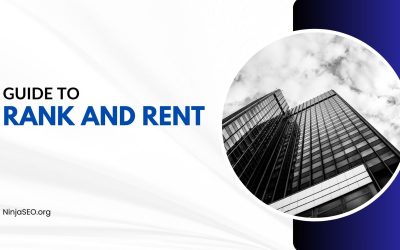So, you’ve got a WordPress website and you want to make sure it ranks well in search engine results, right? Well, if that’s the case, you’ve come to the right place! In this article, we’ll be discussing all things WordPress SEO.
From optimizing your website’s structure and content to utilizing the right plugins, we’ll cover it all. So get ready to take your WordPress website to new heights and watch your organic traffic soar!

#1 WordPress SEO Agency in Zimbabwe
Keyword Research
Understanding the importance of keyword research
Keyword research is a crucial aspect of any successful SEO strategy. By identifying the right keywords, you can optimize your website’s content to attract organic traffic from search engines. Understanding the importance of keyword research allows you to target specific keywords that are relevant to your business and have high search volumes.
Identifying relevant and high-volume keywords
To effectively optimize your website, it’s essential to identify relevant and high-volume keywords. These are the terms that people are searching for when looking for products or services similar to what you offer. By targeting these keywords, you increase your chances of ranking higher in search engine results and driving more traffic to your website.
Utilizing keyword research tools
There are several keyword research tools available that can help you identify relevant and high-volume keywords. Tools like Google Keyword Planner, SEMrush, and Moz Keyword Explorer allow you to see how often specific keywords are searched for and provide insights into related keywords. These tools can be incredibly valuable in shaping your keyword strategy and ensuring that you target the right keywords for your website.
Analyzing keyword competition
While it’s essential to target relevant and high-volume keywords, it’s also crucial to consider the competition for those keywords. Some keywords may have high search volumes but also high competition, making it challenging to rank for them. Analyzing keyword competition allows you to identify less competitive keywords that still have a significant search volume. This strategy can help you optimize your website for keywords that are easier to rank for while still driving organic traffic.
Optimizing Website Structure
Choosing a SEO-friendly WordPress theme
The theme you choose for your WordPress website can have a significant impact on its SEO performance. It’s important to select a theme that is SEO-friendly, meaning it has a clean code structure, fast loading times, and is mobile-friendly. A good SEO-friendly WordPress theme will ensure that your website is easily crawlable by search engines and provides a solid foundation for your SEO efforts.
Creating a logical and organized website structure
Having a logical and organized website structure is essential for both search engines and users. A well-structured website makes it easier for search engines to crawl and index your content, improving your overall SEO performance. Additionally, a clear website structure helps users navigate your site more easily, enhancing their overall experience and encouraging them to stay longer.
Optimizing permalink structure and URL slugs
The permalink structure and URL slugs play a crucial role in optimizing your website for search engines. By using descriptive and keyword-rich URLs, you provide search engines with more information about your content. This can help improve your website’s visibility in search results and make it easier for users to understand what your page is about.
Implementing breadcrumb navigation
Breadcrumb navigation is a useful feature that helps users navigate your website more easily. It provides a clear hierarchical structure, showing users the path they have taken to get to a particular page. From an SEO perspective, breadcrumb navigation can assist search engines in understanding the relationship between your pages and the overall structure of your website.
On-Page Optimization
Writing high-quality and relevant content
When it comes to on-page optimization, high-quality and relevant content is key. Search engines prioritize websites that offer valuable and informative content to users. By creating well-written, engaging, and relevant content, you increase the chances of ranking higher in search engine results and attracting more organic traffic.
Optimizing meta tags (title, description, and keywords)
Meta tags, including the title tag, meta description, and meta keywords, are essential elements of on-page optimization. These tags provide search engines with information about your web pages. By optimizing your meta tags with relevant keywords and compelling descriptions, you can improve your website’s visibility in search results and encourage users to click through to your site.
Using header tags (H1, H2, etc.) effectively
Header tags (H1, H2, etc.) are important for both SEO and enhancing the readability of your content. These tags not only help search engines understand the structure and hierarchy of your content but also make it easier for users to scan and navigate through your page. Properly using header tags can significantly improve the user experience and make your content more SEO-friendly.
Optimizing image alt texts and filenames
Images play a crucial role in engaging users and enhancing the visual appeal of your website. However, search engines cannot interpret images without text descriptions. By optimizing image alt texts and filenames with relevant keywords, you can make your images more discoverable to search engines, improving your overall SEO performance.
Including internal and external links
Internal and external linking is an important aspect of on-page optimization. Internal links connect different pages within your website, providing search engines with a better understanding of your site’s structure. External links, on the other hand, help search engines determine the relevance and authority of your content. By including both types of links, you can improve your website’s search visibility and help users navigate to other valuable resources.
Speed and Performance Optimization
Choosing a fast and reliable hosting provider
Website speed has a direct impact on user experience and search engine rankings. One of the crucial factors that influence website speed is the hosting provider you choose. It’s important to select a fast and reliable hosting provider that can handle your website’s traffic and deliver content quickly to users. By choosing a hosting provider that prioritizes speed, you can ensure that your website loads quickly and provides an optimal user experience.
Using caching plugins
Caching plugins are valuable tools that can significantly improve your website’s speed and performance. These plugins store a static version of your website, reducing the time it takes to generate a page and deliver it to users. By caching your website’s content, you can minimize the load on your server and provide a faster browsing experience to your visitors.
Minifying CSS and JavaScript files
CSS and JavaScript files can significantly impact your website’s speed and performance. By minifying these files, you remove unnecessary characters, white spaces, and line breaks, reducing their file size. Smaller file sizes lead to faster loading times, improving your website’s overall performance.
Optimizing image sizes
Images are often one of the largest components of a webpage and can greatly affect loading times. Optimizing image sizes by compressing them without sacrificing quality can significantly improve your website’s speed and performance. There are various tools and plugins available that can help you optimize your images and strike a balance between image quality and file size.

Mobile Optimization
Ensuring responsiveness and mobile-friendly design
With the increasing use of mobile devices to browse the internet, optimizing your website for mobile is crucial. Ensuring that your website is responsive and mobile-friendly means that it adapts to different screen sizes and provides an optimal browsing experience for mobile users. This not only improves user experience but also positively impacts your website’s SEO performance.
Using mobile optimization plugins
Mobile optimization plugins can be incredibly helpful in ensuring that your website is optimized for mobile devices. These plugins offer features such as mobile-friendly themes, mobile-specific content optimization, and mobile-specific menus. By using these plugins, you can easily optimize your website for mobile without the need for extensive coding knowledge.
Optimizing font sizes and touch elements
When optimizing your website for mobile, it’s important to consider font sizes and touch elements. Font sizes should be legible and easily readable on mobile devices, and touch elements such as buttons and links should be large enough for users to tap without accidentally clicking on neighboring elements. By optimizing font sizes and touch elements, you enhance the user experience and make your website more mobile-friendly.
Testing website on different mobile devices
To ensure that your website is truly optimized for mobile, it’s important to test it on different mobile devices. This allows you to see how your website functions and appears on various screen sizes and operating systems. By testing your website on different devices, you can identify any potential issues and make necessary adjustments to provide the best possible user experience.
Schema Markup and Rich Snippets
Understanding the importance of schema markup
Schema markup is a specific type of structured data that provides additional information to search engines about your website’s content. By implementing schema markup, you enable search engines to better understand the context and meaning behind your content. This can lead to enhanced search visibility and the potential to display rich snippets in search results.
Implementing structured data using plugins
Implementing schema markup can be challenging, especially for those without coding knowledge. Thankfully, there are several plugins available that simplify the process of adding structured data to your website. These plugins offer pre-built schema markup templates and generate the necessary code for you. By using these plugins, you can easily implement structured data without the need for extensive technical expertise.
Utilizing rich snippets for better search visibility
Rich snippets are search results that include additional information, such as ratings, reviews, and images. These snippets can significantly enhance your website’s visibility in search results, attracting more clicks and potentially increasing traffic. By implementing schema markup and utilizing rich snippets, you can make your search results more visually appealing and stand out from the competition.

XML Sitemaps and Robots.txt
Creating and submitting XML sitemaps
XML sitemaps are files that provide search engines with a roadmap of your website’s structure and content. By creating and submitting an XML sitemap to search engines, you can ensure that all your web pages are indexed and crawled. This helps search engines understand the complete scope of your website and improves the chances of your content appearing in search results.
Optimizing robots.txt file to control crawler access
Robots.txt is a text file that provides instructions to search engine crawlers on how to interact with your website. By optimizing your robots.txt file, you can control which pages search engines should crawl and index, improving your website’s overall crawl efficiency. Additionally, optimizing your robots.txt file can help prevent search engines from accessing sensitive or duplicate content.
Regularly updating and monitoring sitemaps and robots.txt
As your website evolves and new content is added, it’s important to regularly update and monitor your XML sitemaps and robots.txt file. This ensures that search engines are aware of any changes to your website’s structure or content and can crawl and index it accordingly. Regularly updating and monitoring these files allows you to maintain an optimized website and improve your SEO performance.
User Experience Optimization
Improving website navigation and user interface
User experience is a critical factor in determining the success of your website. By improving website navigation and user interface, you can create a seamless browsing experience for your visitors. This includes incorporating intuitive menus, clear navigation paths, and easy-to-find information. By optimizing user experience, you increase the chances of visitors staying on your site longer and engaging with your content.
Enhancing website speed and performance
Website speed and performance play a significant role in user experience. A slow-loading website can frustrate visitors and lead to high bounce rates. By implementing the speed and performance optimization techniques mentioned earlier, you can provide a fast and smooth browsing experience for your users. This will not only improve user satisfaction but also positively impact your website’s SEO performance.
Ensuring optimized content readability
Content readability is crucial for user experience. Visitors should be able to consume your content easily and without difficulty. This includes using appropriate font sizes, spacing, and formatting, as well as breaking up content with headings, subheadings, and bullet points. By ensuring optimized content readability, you make it easier for users to understand and engage with your content.
Including clear calls-to-action
Clear calls-to-action (CTAs) are essential for guiding visitors towards the desired actions on your website, such as making a purchase or signing up for a newsletter. By strategically placing CTAs throughout your website, you can encourage visitors to take the desired actions and increase your conversion rates. Optimizing your CTAs improves user experience and increases the effectiveness of your website.
Social Media Integration
Adding social sharing buttons
Social sharing buttons allow visitors to easily share your content on various social media platforms. By adding these buttons to your website, you encourage users to promote your content and expand your online reach. This social sharing not only enhances user engagement but also helps increase the visibility and exposure of your website.
Including Open Graph tags for better social media presentation
Open Graph tags are meta tags that control how your content is displayed when shared on social media platforms. By including Open Graph tags in your website’s code, you can ensure that your content is presented in the most visually appealing and engaging way on social media. This can lead to increased click-through rates and higher user engagement on social media platforms.
Optimizing content for social sharing
To maximize the impact of social media integration, it’s important to optimize your content for social sharing. This includes creating engaging and shareable content, using eye-catching images, and incorporating relevant hashtags. By optimizing your content for social sharing, you increase the chances of your content being shared and reaching a wider audience.
Monitoring and Tracking
Installing and configuring Google Analytics
Google Analytics is a powerful tool that provides valuable insights into your website’s performance. By installing and configuring Google Analytics, you can track various metrics, such as website traffic, user behavior, and conversion rates. This data allows you to make data-driven decisions and continuously improve your website’s performance and SEO strategy.
Setting up goal tracking
Goal tracking in Google Analytics allows you to define specific actions or conversions that you want to track on your website. This could be a completed purchase, a form submission, or a newsletter sign-up. By setting up goal tracking, you can easily monitor the effectiveness of your marketing efforts and optimize your website accordingly.
Monitoring website performance and traffic
Regularly monitoring your website’s performance and traffic is crucial for identifying areas for improvement. By analyzing metrics such as page load times, bounce rates, and time on site, you can identify any potential issues and make necessary adjustments. Monitoring website performance and traffic helps you ensure that your website is functioning optimally and providing a positive user experience.
Analyzing SEO metrics and making necessary adjustments
Analyzing SEO metrics is essential for evaluating the success of your SEO efforts and making necessary adjustments to your strategy. By monitoring metrics such as organic search traffic, keyword rankings, and backlinks, you can identify areas where you are excelling and areas that require improvement. This data-driven approach allows you to continuously optimize your website for better search engine visibility and overall SEO performance.
In conclusion, optimizing your WordPress website for SEO involves various strategies and techniques. From conducting thorough keyword research to implementing schema markup and monitoring your website’s performance, each aspect contributes to improving your website’s visibility in search engine results and providing a better user experience. By following these guidelines and continuously evaluating and adjusting your SEO strategy, you can achieve long-term success and drive organic traffic to your website.









